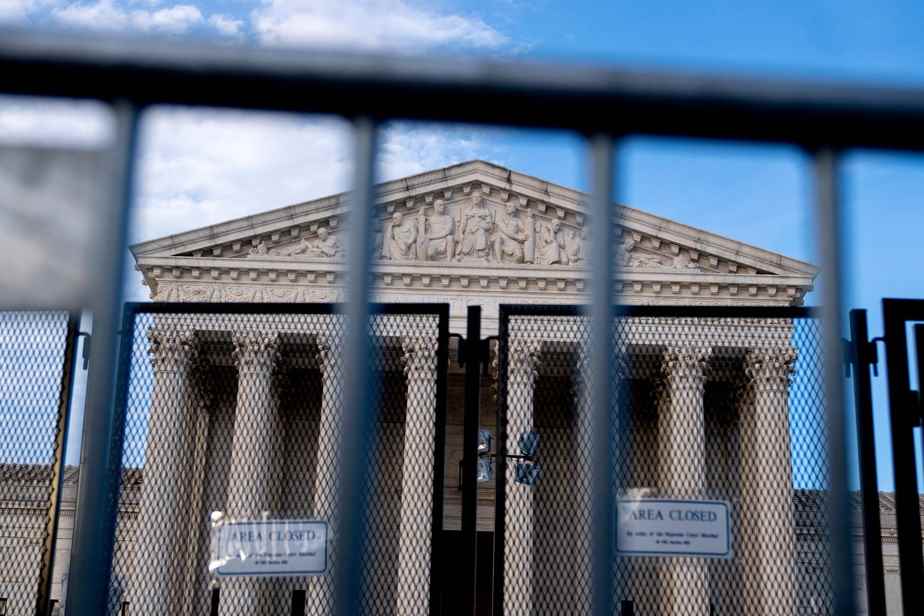The expression “judges’ government” is often invoked in Quebec to analyze the role that superior courts play in American and Canadian democracies.1. As a reminder, this expression comes to us from the book of the French jurist Édouard Lambert, The government of judges and the fight against social legislation in the United Statespublished in 1921.
Posted at 1:30 p.m.
Lambert thus described the Lochner years of the American Supreme Court (from the name of the famous judgment), ranging from the years 1890 to 1930, during which the judges of the highest court invalidated social legislation, such as the work week, in the name of individual freedoms. , primarily the right to private property. Judges had their own logic which they wanted to impose on society and governments and, in doing so, paralyzed the evolution of society and its law.
The federal administration of Franklin D. Roosevelt battled hard with this court, which was blocking his New Deal aimed at getting the Republic out of the Great Depression. Roosevelt even had to threaten to exercise his prerogatives and to increase the number of judges and to appoint only progressives so that the judges would begin to accept the social intervention of the federal state.
Subsequently, the Court experienced a certain “golden age” for progressive forces. Through a liberal and lively interpretation of the Constitution, adapting the letter to the needs of a changing society, the Court will extend the rights of all classes of citizens, such as African Americans, gays and lesbians, and women. Thus, the judges were in tune with society and major political orientations.
Beginning with President Richard Nixon and following the rise of neoconservatism, the Republican Party undertook a long-term strategy to change the orientation of the Court, by appointing more conservative judges.
Lots of money, elected officials, and think tanks (like the Federalist Society) have acted in concert to achieve this goal of overturning the great elements of modern progressive jurisprudence. Judges began to vote more and more systematically according to a partisan logic, matching the political vision of the party – Democrat or Republican – which had appointed them. This introduced a dangerous and unhealthy politicization of the judiciary, which has since harmed its role as an independent arbiter and the perception of its impartiality. This dynamic also undermines the rule of law. Moreover, public confidence in this institution is at an all-time low, at less than 25% support, according to Gallup2.
The long-running Republican goal has now been achieved, thanks to the Trump administration’s three ultra-conservative appointments, which notably overturned the case law of the popular ruling. Roe v. wade (1973) on the right to abortion.
On the political instrumentalization of the judiciary
Rather than “government of judges”, we should speak more accurately of the political instrumentalization of the judiciary. This observation is essential when the American Supreme Court now appears as a partisan third chamber of Congress, which is controlled by a majority of Republicans (6 against 3), but without accountability to the electorate.
Canada has not experienced this type of excessive politicization of the judiciary. There are no major differences between the behavior of judges appointed by the liberals and the conservatives, except that the latter tend to show a little more deference to political powers.
This does not mean that there is no politicization of the Supreme Court of Canada. Simply, it is not of a partisan nature.
We fall here into the difference, classic in political science, between politics and politics. In short, politics is the space of the contest to acquire or retain power, and politics concerns the major questions of living together, of a general vision of the nation and society as well as of a just political system.

PHOTO SEAN KILPATRICK, THE CANADIAN PRESS
The Supreme Court of Canada, also closed, on June 29
Canadian judges are obviously bearers of a political vision (notably centralizing and standardizing) of Canada and its constitutional order; vision which is much more political than political. There was no import of deleterious partisan politics into the Supreme Court of Canada.
Nor is it to say that the minority nations in Canada, aboriginal and Quebec, or the provincial states do not have legitimate political criticisms to make of the role that the Supreme Court of Canada plays in the centralization of powers in the federation. . But these critics cannot point to a partisan court that would be out of step with the rest of society, political powers and post-1982 constitutional logic in Canada.
In short, when we observe the American and Canadian courts, we would be very ill-advised to speak of a “government of judges”, like what Édouard Lambert observed in the 1920s in the United States.

